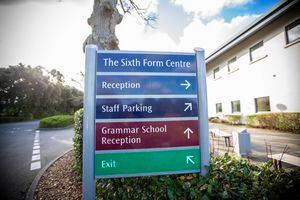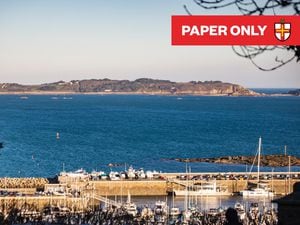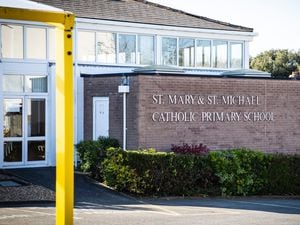Keeping sixth form with one of the 11-16 schools is an option
A POSSIBLE compromise model has emerged in the review of Guernsey’s secondary schools, with a ‘co-located’ sixth form college at Les Varendes which would be on the same site as an 11-16 school, but it would be considered separate.

Les Beaucamps and St Sampson’s would stay as 11-16 schools, and La Mare de Carteret High School would close.
Under this model there would therefore be three 11-16 schools and one co-located sixth form college.
This set up was explored as part of the ‘pause and review’ investigations following requests from union representatives.
The option was referred to as C2 in a leaked States report, and under this idea the classrooms, staff rooms, outdoor social areas, and independent study areas at Les Varendes would be separated between the 11-16 school and the sixth form college.
Staff would also be regarded as separate, although it was ‘anticipated that some staff would teach across both phases’.
Only sports facilities would be shared fully.
There was consensus among those consulted in the review that Les Varendes would be the best site for a co-located sixth form college because the Sixth Form Centre is already there, it has a central location in the island, it is close to the Guernsey Institute, which would support mixed programmes, and there would be no need to move the sixth form during the transition period.
The interim report found that the capital costs of this option were £68.1m.
A similar model, called C1, would see Les Varendes remain as a 11-18 school, and 11-16 schools at Les Beaucamps and St Sampson’s, and this would cost £3m less at £65m.
In comparison, creating three 11-16 schools and an entirely separate sixth form college on a fourth site would cost between £91m. and £105m., depending on which site was used for sixth formers.
The capital price tag for the two school model is £60m., and for three 11-18 colleges it is £65m.
The report notes that option C2 has some features that reach across various options.
‘It would be similar to option C1 (two 11-16 colleges and one integrated 11-18 college) in some respects and similar to option D (three 11-16 colleges and a sixth form college on a separate site) in others.
‘An integrated 11-18 college would have spaces and specialist classrooms utilised by both 11-16 and sixth form students. Separating the sixth form rather than integrating it therefore requires additional rooms.
‘The base cost of providing the facilities to which students would have had access in the baseline model is therefore higher in option C2 than option C1.’
The numbers of students across the three sites would be the same irrespective of whether the sixth form was integrated or not.
At Les Varendes, there would be capacity for 720 pupils in the 11-16 school, and up to 450 in the sixth form college, a total of 1,170.
Population data indicates that the expected number on this site would be below 1,100 by 2025/6, and below 1,000 by 2029/30.
At Les Beaucamps and St Sampson’s, there would be capacity for 840 pupils each, and expected numbers would also fall.
Option C1 has been criticised by educationalists as creating a ‘postcode lottery’, and at this very early stage it is not known if they could be convinced by the new option C2.





